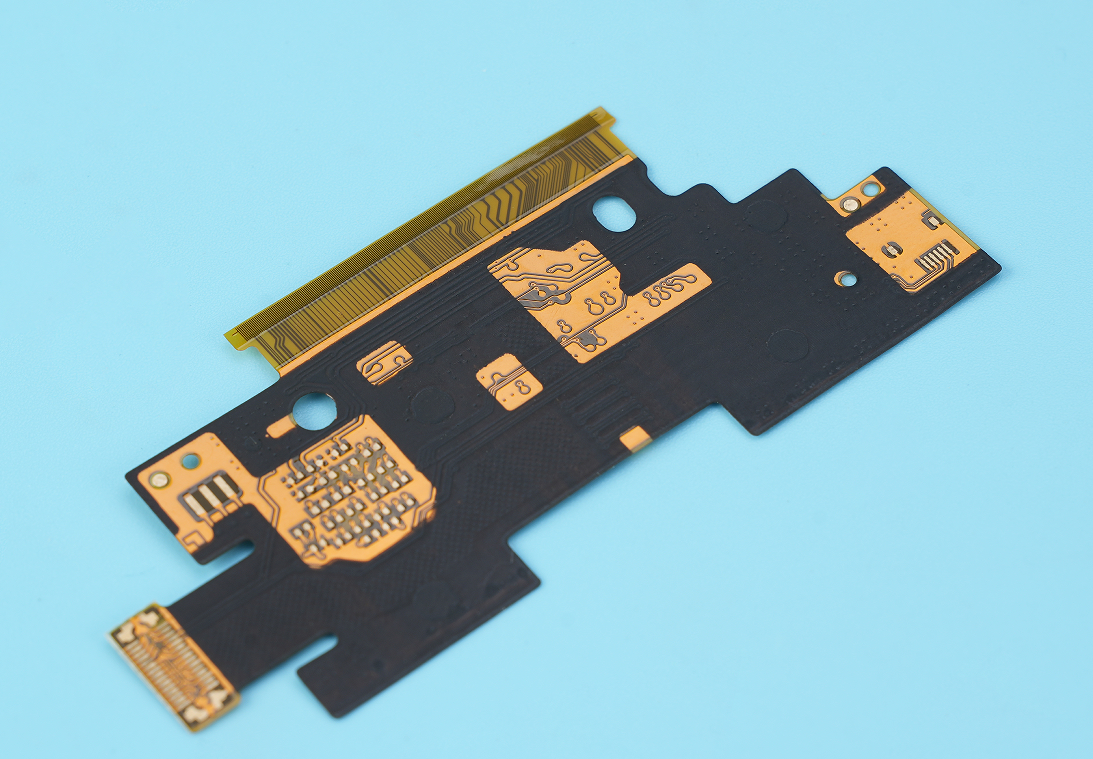Flexible printed circuit boards (PCBs) are becoming increasingly popular in electronic design due to their ability to conform to complex shapes and their lightweight nature. However, their flexible nature also makes them more susceptible to electromagnetic interference (EMI), which can negatively impact the performance of the circuit. In this article, we will discuss the importance of EMI shielding in flex circuits and provide a guide to effective design and materials selection for shielding flexible PCBs. The Impact of EMI on Flexible Electronic SystemsEMI is a disturbance caused by electromagnetic waves that can negatively impact the performance of electronic devices. Flexible electronic systems, such as those using flexible PCBs, are particularly vulnerable to EMI due to their thin and flexible nature. In flex circuits, EMI can arise from a variety of sources, such as nearby electronic devices, wireless signals, and power lines. When EMI occurs, it can lead to issues such as signal distortion, data loss, and even complete system failure. Therefore, it is essential to design effective EMI shielding for flexible PCBs to minimize the impact of electromagnetic interference and properly shielded against EMI.
The importance of EMI shielding in flex circuits cannot be overstated. In addition to maintaining the proper function of electronic devices, proper EMI shielding can also help ensure the safety of users. For example, in medical devices, EMI can interfere with the proper functioning of devices such as pacemakers or defibrillators, which can lead to serious health consequences.

(EMI shielding in flex circuit)
Best Practices for EMI Shielding in Flex Circuits1. Ground planes and shieldsThe use of ground planes and shields is a common technique for reducing EMI in electronic systems. Ground planes help to reduce the impact of EMI by providing a low impedance path for electromagnetic waves to flow. Shields are used to physically block electromagnetic waves and prevent them from interfering with the circuit. In flex circuits, the use of ground planes and shields can be challenging due to the thin and flexible of the PCB. However, there are a number of techniques that can be used to incorporate ground planes and shields into the design. For example, a metal foil can be used as a shield or a thin layer of conductive material can be added to the PCB. 2. Signal isolationAnother effective technique for reducing EMI in flex circuits is signal isolation. This involves separating the signal and power traces on the PCB to minimize the impact of EMI. Signal isolation can be achieved by using a ground plane or shield to physically separate the traces or by using a high impedance buffer to isolate the signals. 3. Use of EMI filtersEMI filters are components that are used to suppress unwanted noise on a circuit. They are typically used in combination with other EMI shielding techniques to provide additional protection against electromagnetic interference. In flex circuits, EMI filters can be used to suppress noise on power and signal lines. This can be particularly useful for circuits that are located in close proximity to other electronic devices that may generate EMI. 4. Selection of EMI shielding materialsThe selection of EMI shielding materials is an important consideration when designing flex circuits. Conductive materials such as copper, aluminum, and silver are commonly used for EMI shielding due to their high conductivity and ability to block electromagnetic waves. This shield can be formed using a variety of techniques, including metal plating, coating, or laminating. Additionally, various materials can be used to create a cover-lay, which is a protective layer that covers the top of the flex circuit and can also contribute to EMI shielding.
FAQs:
Q: What is EMI?
A: EMI stands for electromagnetic interference. It is the disturbance caused by an electromagnetic field on an electronic circuit.
Q: Why is EMI shielding important for flex circuits?
A: Flex circuits are prone to EMI due to their thin and flexible design. EMI can affect their performance and reliability, so it is crucial to design effective shielding to ensure optimal functioning.
Q: What are the commonly used materials for EMI shielding?
A: Copper and aluminum are the most commonly used materials for EMI shielding due to their high conductivity and effectiveness in blocking electromagnetic waves.
However, given the multitude of options available, it is crucial to select the appropriate EMI shielding material for your flex circuit. This requires taking into account the specific requirements of the circuit as well as the intended application in order to achieve the optimal performance.
EMI shielding is an essential aspect of designing flexible electronic systems. By following these best practices for EMI shielding in flex circuits, designers can minimize the impact of electromagnetic interference and ensure the reliable operation of flexible electronic systems. If you don’t know how to design EMI shielding for your flex circuits, welcome to contact us right now to get your unique solution.










 2023-05-09
2023-05-09
 BEST
BEST

.png)
.png)
.png)
.png)

.png)

